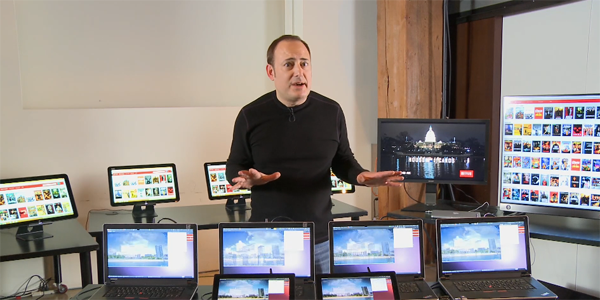The man behind WebTV and OnLive says he’s created a mobile broadband technology that lets you get maximum speed regardless of how many other people are trying to connect. Steve Perlman’s claims have, to say the least, raised skepticism in the mobile industry.
The technology, originally called DIDO, is now being launched under the name pCell, meaning personal cell. It is compatible with any device that uses the LTE version of 4G, but does require networks to build new cellphone towers.
The heart of Perlman’s idea is rethinking the way cellphone data networks work. At the moment, each tower and/or base station transmits a signal that covers a specific area, known as a cell. The towers have to be placed so that the cells don’t overlap, which would cause interference as the signals from different towers clash.
In turn that means each user is connected in one cell only and must share capacity with every other device covered by the same cell, which can cause congestion. The need to avoid cells overlapping can also mean some locations aren’t covered by any cell, meaning they become reception deadspots.
Perlman says his technology overcomes the problem of clashing signals. In turn, a device can combine signals from multiple towers/base stations, in effect creating a separate personal cell which is much less susceptible to bandwidth pressures from other users.
Existing mobile devices will be compatible because it’s not the device that’s figuring out the combination of signals to use. Instead the network transmitters will look at the location of the various devices trying to connect and configure themselves to distribute the signals in the most efficient way.
The idea would be to set up a network with far more base stations that currently exist, giving users more options for getting a signal and reducing the number of places with so signal at all.
Artemis Networks, the company Perlman has set up to market the technology, will begin by setting up a network of 350 rooftop transmitters in San Francisco. The plan is to partner with a company that has network expertise to offer a pilot commercial service by the end of the year.
Assuming the system does work, it doesn’t literally guarantee everyone will always get a perfect signal regardless of how many other users are active. The network as a whole will still have capacity limits. However, if what Perlman claims proves correct, that capacity may be better distributed, reducing congestion.

